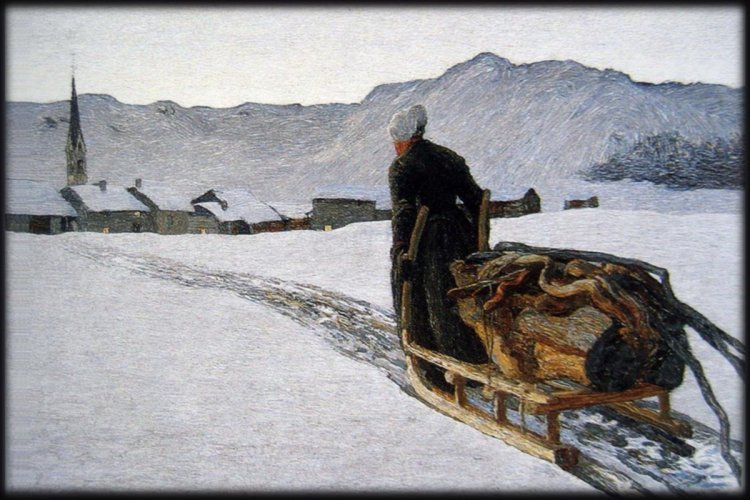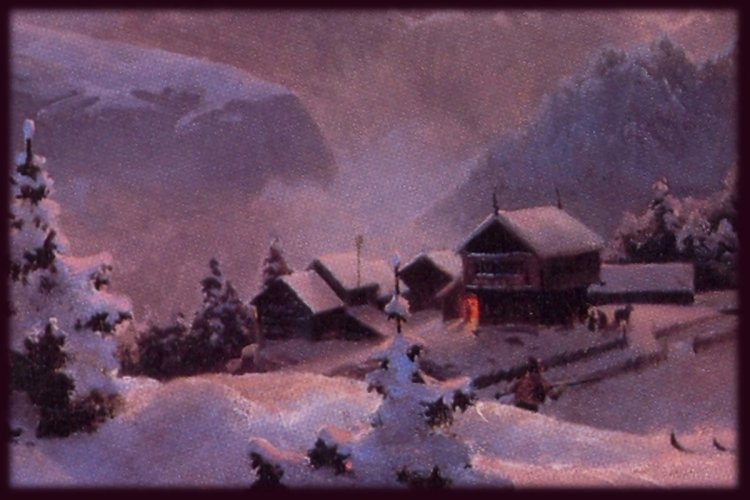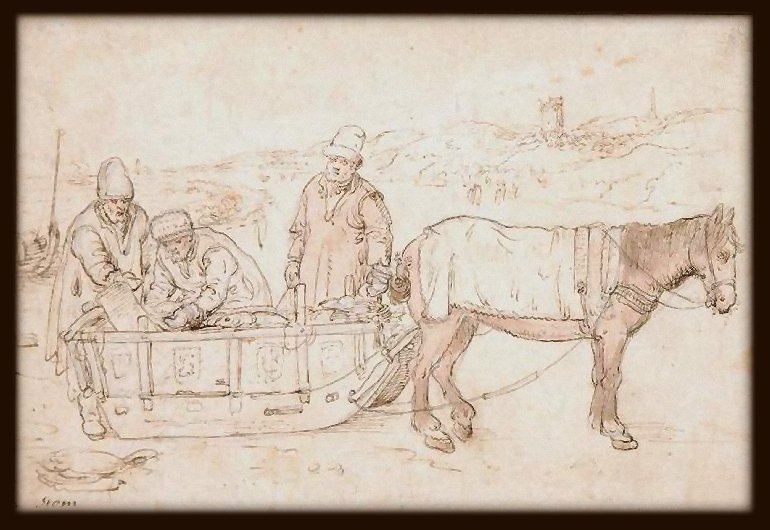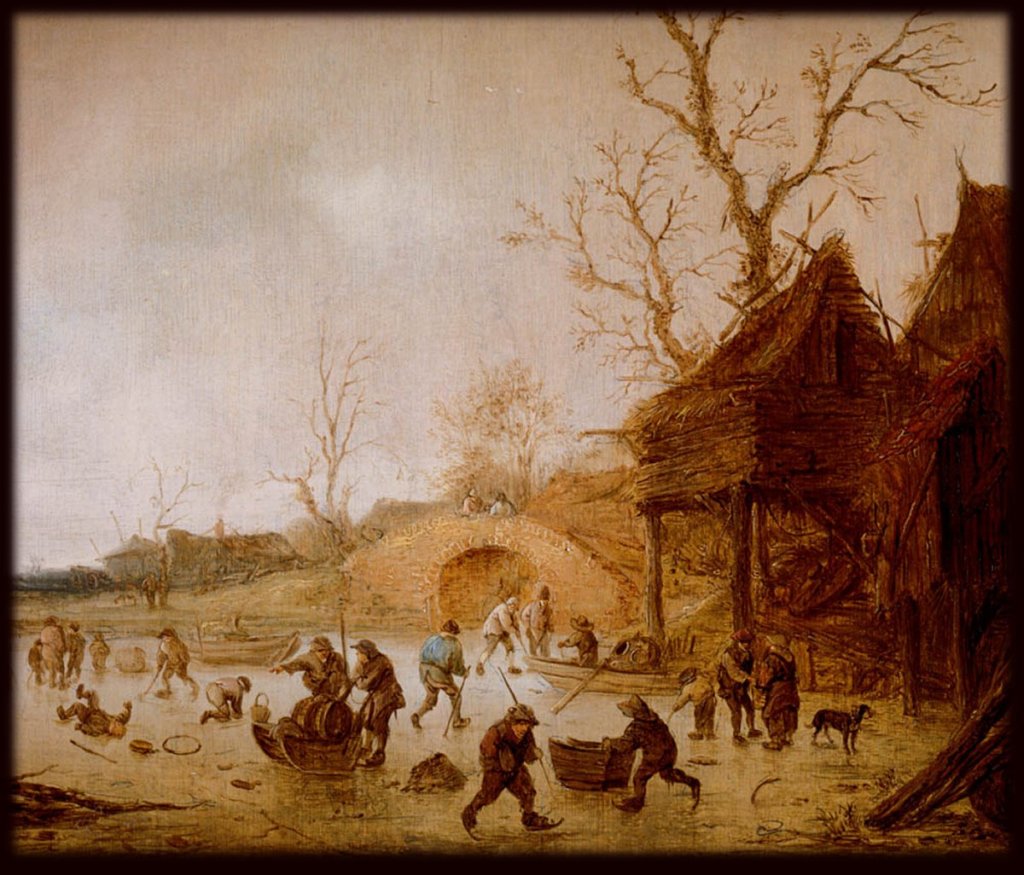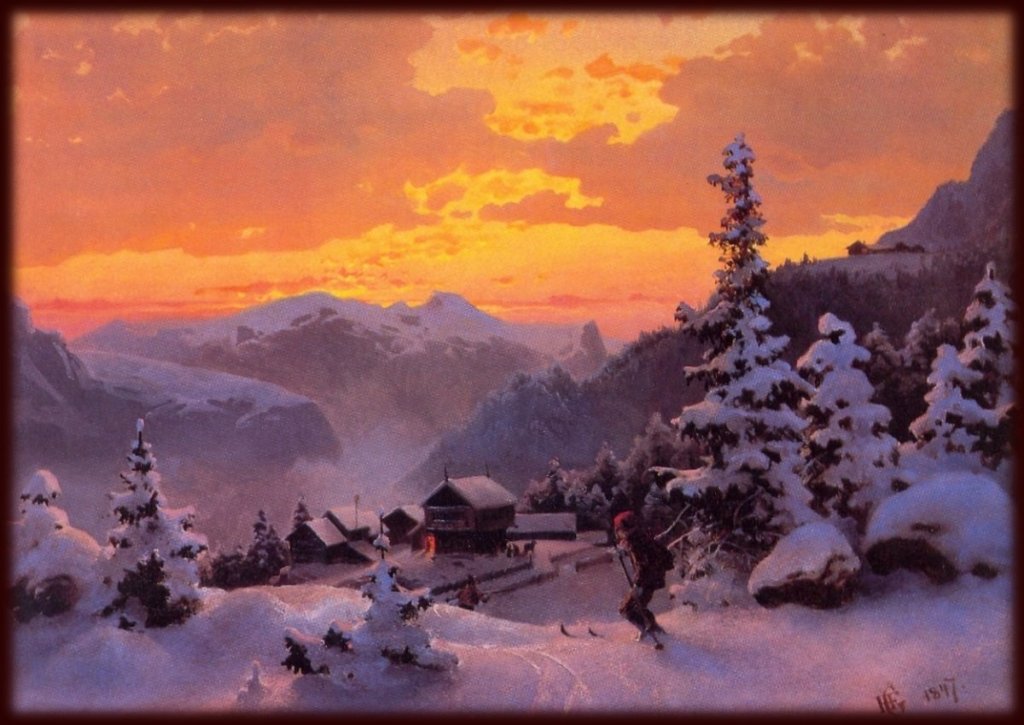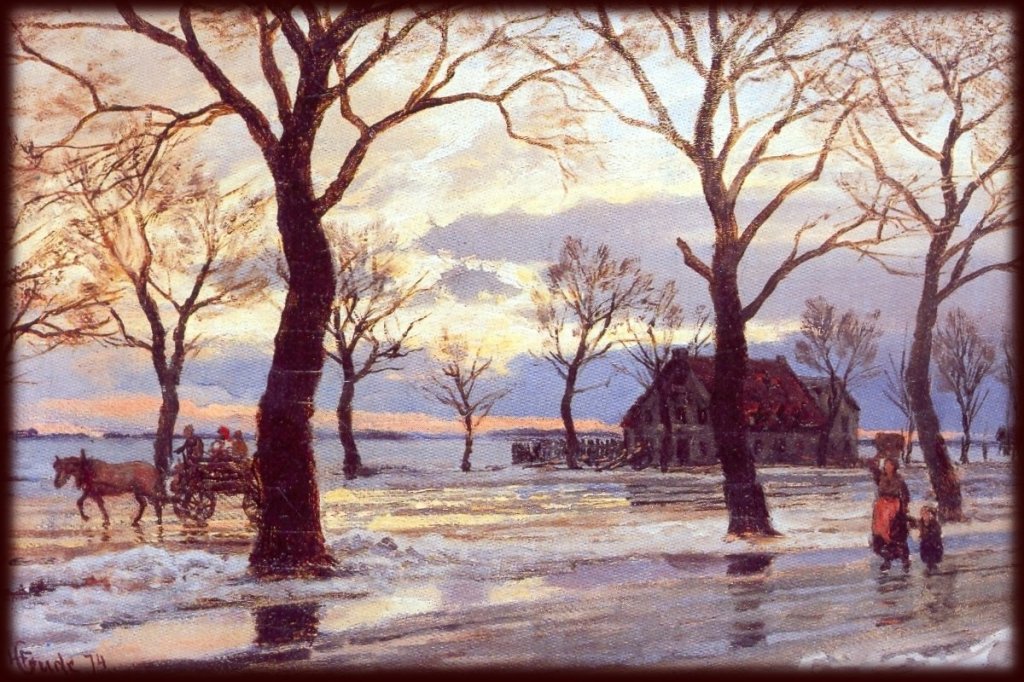When Torgrim rounded the next bend, he let himself slide to a stop. He rested a moment, leaning on his ski-pole, studying the way ahead. The trail swooped down one long hillside and up the next, gleaming pale blue under the winter sky. Evening shadows lurked under the snow-laden spruces that hugged the path.
“Time to start looking for a place to stay the night,” he said into the silence, his words wafting in clouds. He pushed off and sailed down the slope, his speed carrying him a good way up the next hillside.
No sign of any dwelling. No one on the trail to ask for directions to shelter. No sound but his skis whisking the snow, and his own labored breathing as he labored up the empty slope.
Then suddenly, out of the blue–sleigh bells, right behind him, and the clopping of hooves. Torgrim whirled.
A one-horse sleigh pulled up. “Want a quick ride home?” asked the driver.
“Ah, no,” Torgrim answered. “I have such a long way home it can’t be done in one evening.*”
The stranger patted the seat beside him. “Come on. I’ll take you.”
A thief, luring victims to their doom? Torgrim backed off a step, thinking of his dagger, tucked away in his backpack. “You have no idea how far it is to my home.* I live way up in Gudbrandsdal.*”
“I know where you live,*” said the fellow, “but you have no idea I’m your neighbor,* do you, Torgrim?” He named Torgrim’s farm, as well.
Torgrim searched the man’s face, still not recognizing him, but a thief wouldn’t know his name.
“Take a seat now, and I’ll have you home before your wife Anne brings the evening porridge to the table.*”
The fellow even knew his wife! Must be safe enough to trust this man. He stepped onto the back runners.
“No!” said the stranger. “Come sit up here on the seat.* Back there, you can’t hang on well enough, how fast my horse runs.*”
“It would be a marvel if he runs as fast as my fine trotter I sold today in Kongsberg,*” Torgrim said as he settled in.
“Ya, Bronen runs fast indeed.*”
The horse took off like an arrow. The wind howled and whistled in Torgrim’s ears, and he fell back, clinging to the side of the sleigh. Everything blurred with speed. Was that treetops flashing past? Were they flying through the air?!
The horse slowed to a stop. Torgrim sat up, shaking, and looked around. The farmyard in front of his own house, could it be true? He leaped down, darted to the window, looked inside.
There stood Anne by the hearth, stirring the evening porridge.
Still marveling, Torgrim turned to the sleigh. “Come in for supper!” he blurted without giving it any thought. “The least I can do in return.”
“I shall take nothing in payment for the transport,*” the sleigh-driver said. “But promise me one thing.* Move your stable, for each time the horses piss, it drips down on my table.*”
A tusse-man, Torgrim realized, who must be living in the mound behind the cowbarn. “Wh-where should I put the stable?”
The fellow pointed to a different site. “It won’t be any trouble for you, moving the stables.* Just take the horses out tomorrow night, and all their tack.*”
“Thousand thanks for the swift passage, and my blessing upon you!” Torgrim said.
The tusse-man nodded, and in one heartbeat vanished, horse, sleigh and all.
The next day Torgrim emptied and cleaned the stables.
The following morning, the stables stood upon the new site, rebuilt in the dark of the night by tusse-magic.
* dialogue comes straight out of the folktale which comes from Telemark, Norway
text: © 2021 Joyce Holt
artwork: 19th century paintings: in the public domain, according to these sources:
wikiart: “This artwork is in public domain in its country of origin and other countries and areas where the copyright term is the author’s life plus 70 years or less.”
wikipedia: “This work is in the public domain in its country of origin and other countries and areas where the copyright term is the author’s life plus 100 years or fewer.”
{{PD-US-expired}} : published anywhere (or registered with the U.S. Copyright Office) before 1926 and public domain in the U.S.
Tales from Norway and Wales
“What’s with all the tales from Norway and Wales?”
While I’m fascinated by tales from all around the world, my historical-fantasy novels take place in 9th century Norway, and 6th century Cumbria (a British realm next door to Wales). That’s where I’ve been prowling around the longest!
Plus I was lucky enough to have stumbled across some tomes containing little-known folklore from both areas. The one from Telemark, Norway — recorded in phonetically-spelled, remote mountain dialect — required months to puzzle out. It bore little resemblance to the city Norwegian I’d learned!
